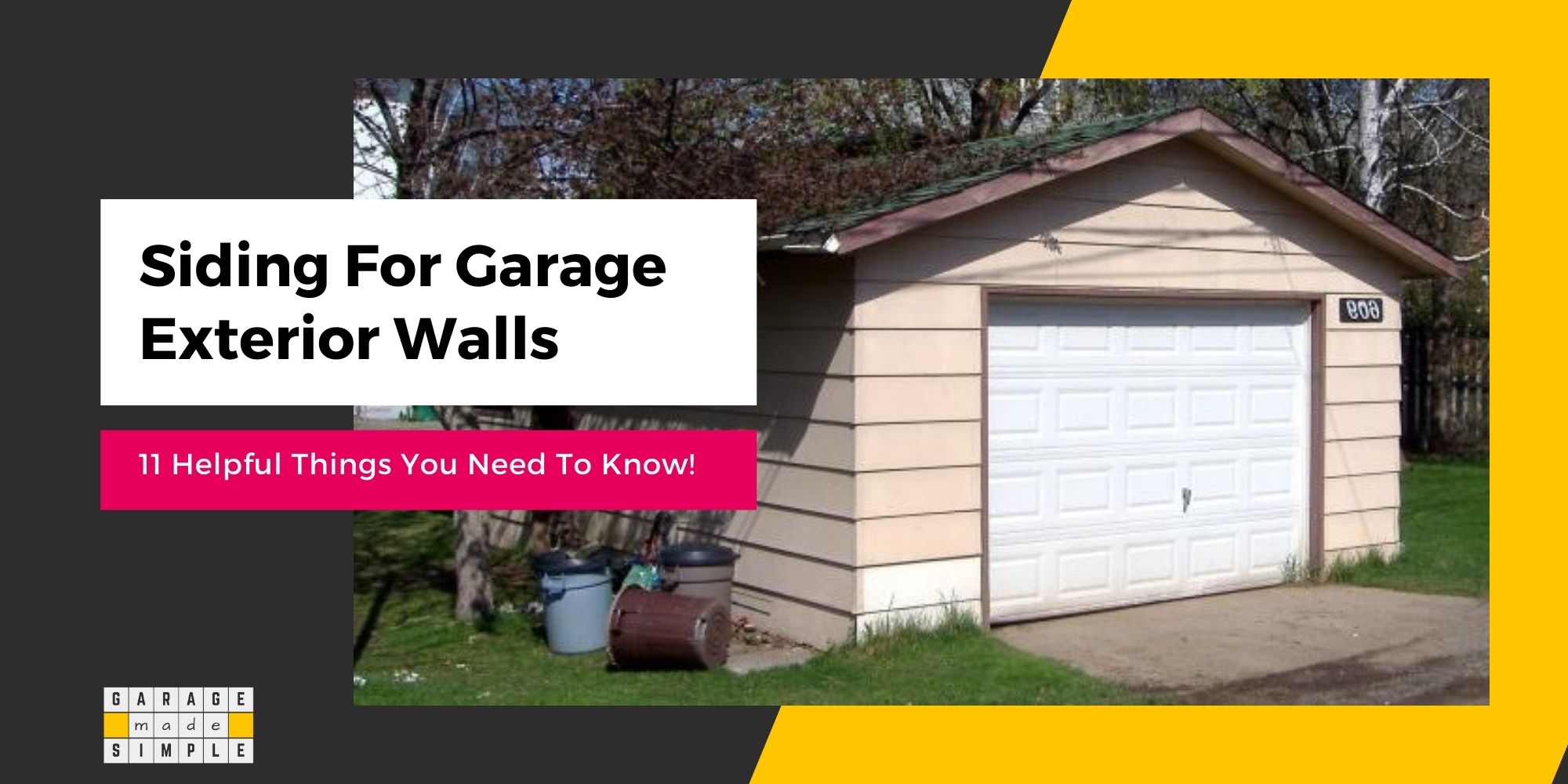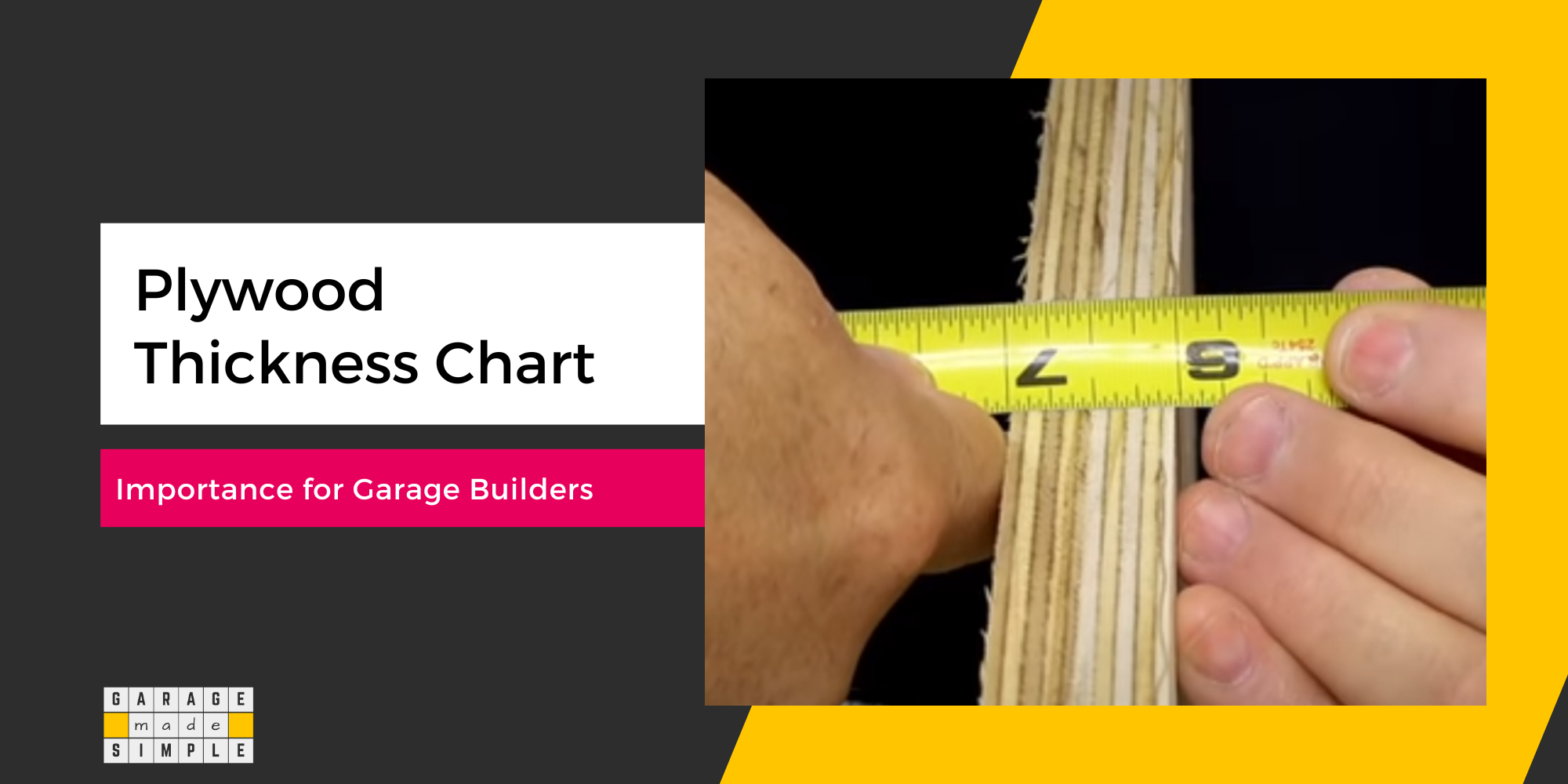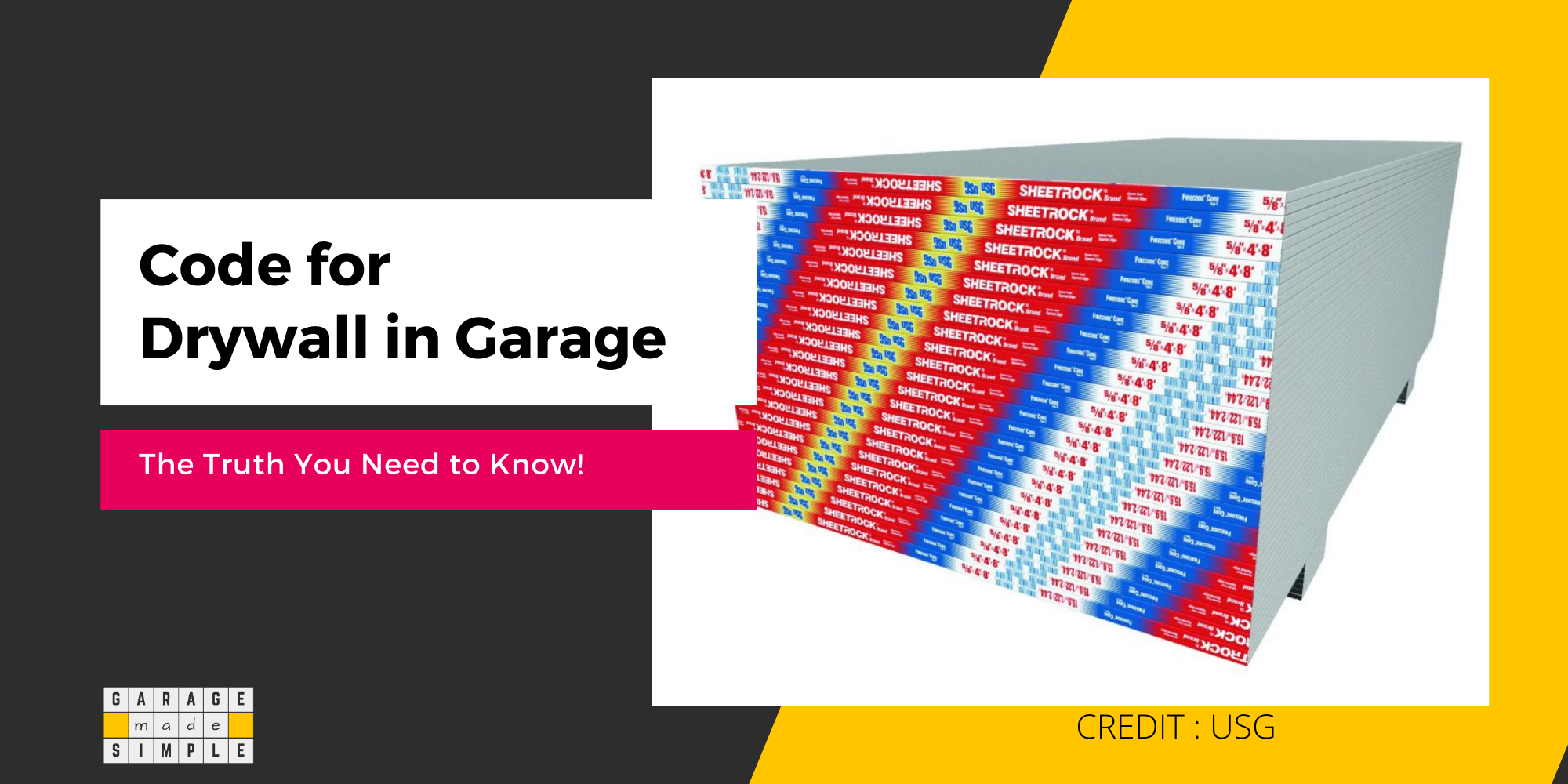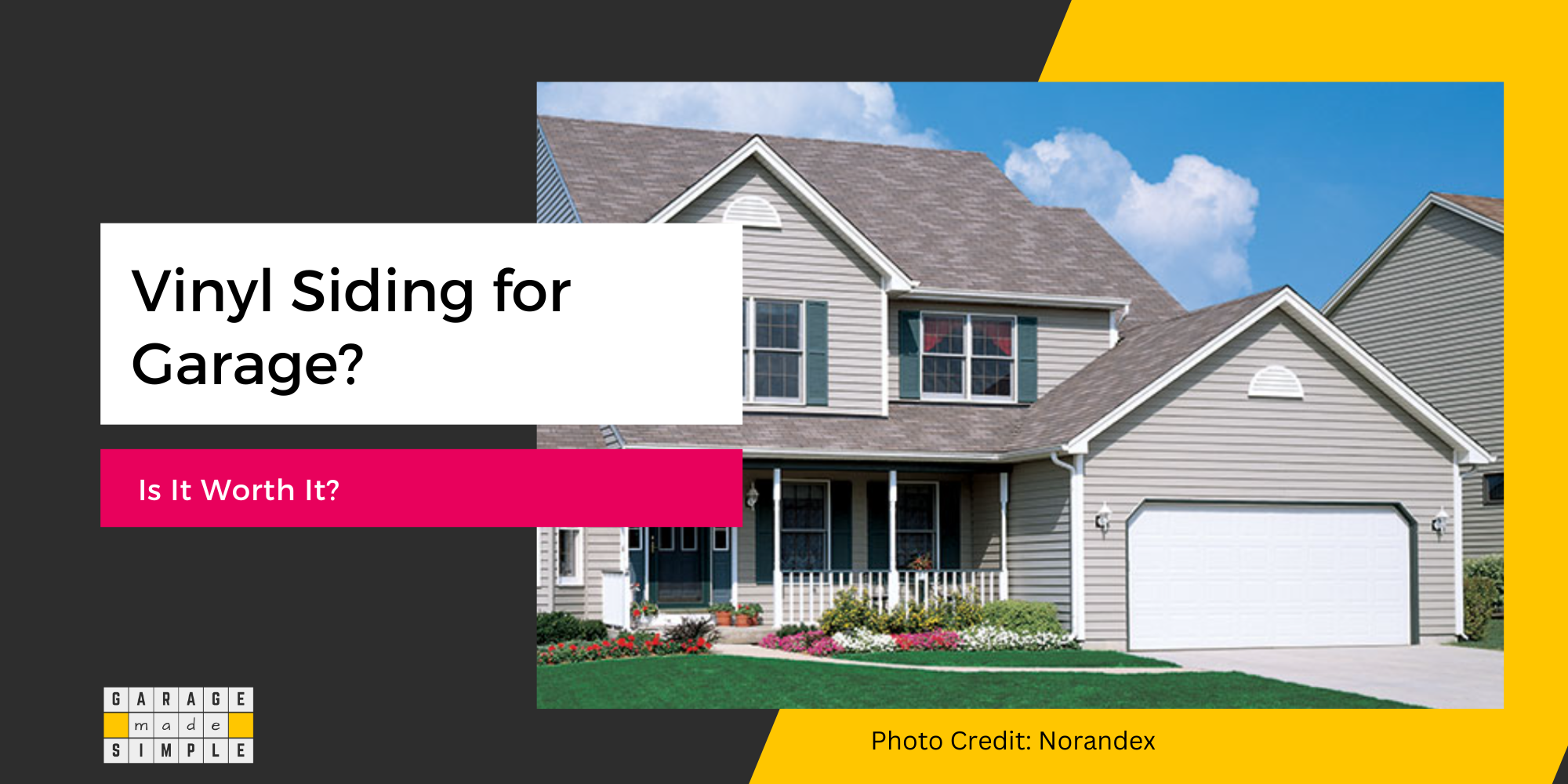Can You Drywall An Unheated Garage? Super Helpful Guide
garagemadesimple.com is a participant in the Amazon Services LLC Associates Program, an affiliate advertising program designed to provide a means for sites to earn advertising fees by advertising and linking to Amazon.com . The website is also an affiliate of a few other brands.
Can You Drywall an Unheated Garage?
You can drywall an unheated garage. The drywall can handle cold reasonably well. However, joint compounds must be at 55 °F or higher for effective bonding, so avoid installation if ambient temperatures are lower than that.
Drywall is cost effective and easy to install. For an attached garage you must use drywall for the garage wall adjoining the house, as per the building code. There is no code requirement for using drywall in detached garages but there are several advantages.
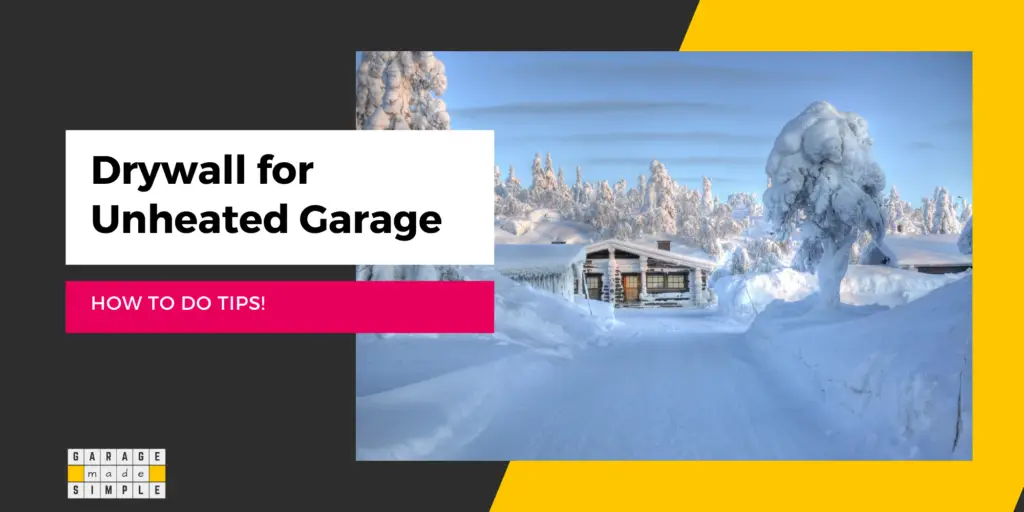
Drywall is a great sheathing material for garage walls. You can tuck away utilities such as electrical wiring, communication cables and plumbing behind the drywall. Overcoat the drywall with paint and make your garage more presentable and livable.
An attached garage is more likely to be heated than a detached garage. But drywall is an excellent choice, even for an unheated detached garage.
However, drywall and the installation of drywall can be adversely affected by low temperatures. The problems you may encounter are:
Drywall May Crack in Extreme Cold
All materials expand when it is hot and contract when it is cold. Drywall is no different. The difference is that drywall is rather brittle. Sudden variations in temperature can result in stresses that may make drywall board develop cracks.
For the most part these are hairline cracks and not visible, especially if the drywall has a flexible waterproof paint or covering on it.
To prevent larger cracks in the drywall,
- Ensure that you use garage wall studs from treated lumber, low in moisture content
- Use drywall from a reputed brand and from a reputed store, to ensure low moisture content
- Leave an expansion gap at the drywall board joints
- Apply Drywall Mud correctly (see section below)
- Keep your garage dry and well ventilated
Drywall is powdered gypsum, sandwiched between two layers of paper. Gypsum is highly hygroscopic; it readily absorbs moisture. Keeping the garage dry and well ventilated will reduce the risk of mold growth.
Joint Compound (Drywall Mud) Cracking
Joint Compound, also known as Drywall Mud, is used to cover the seams and screws of drywall installations. Nail holes and other small indentations can also be filled up with drywall mud.
Joint compound is water based and its drying time depends on the temperature and humidity. For best results, you should use the joint compound when the temperature is in the 65-80 degree F range and the humidity level is 20-40 percent range.
I recommend using USG 381466 Lightweight All Purpose Joint Compound Ready Mixed, especially when you drywall an unheated garage in cold weather, because it has excellent crack resistance and low shrinkage.
USG Lightweight All Purpose Joint Compound Ready Mixed
USG Lightweight All Purpose Joint Compound Ready Mixed
Plus three key advantages: up to 35% less WEIGHT; less shrinkage and exceptional ease of sanding.
The compound features superior ease of handling, good crack-resistance, and excellent adhesion. It combines all-purpose, single-package convenience with optimum taping and topping performance for interior gypsum panel construction.
Care should also be taken to apply the drywall mud in several layers. Thick applications are more likely to crack when temperatures drop.
What Temperature Is Too Cold for Drywall?
Low temperatures, even below freezing, do not affect the performance of drywall. Temperature and humidity are important during installation though. This aspect has already been covered in the above sections.
When you drywall an unheated garage you will not have a problem, even in freezing winter conditions provided the garage is kept dry and well ventilated.
United States Gypsum Company (USG) is the manufacturer of the leading brand of drywall, Sheetrock. Under the “Limitations” section of the submittal sheet of USG SHEETROCK® BRAND they do not mention any lower temperature limit for usage.
It mentions that sheetrock should not be stored for long periods at temperatures above 125 degree F. Not a cause for concern unless you live in Death Valley!
However, the submittal sheet for USG SHEETROCK® BRAND ALL PURPOSE JOINT COMPOUND does advise you to protect the container from freezing, extreme heat and exposure to direct sunlight.
Can You Drywall an Unheated Garage Without Insulation?
You can drywall an unheated garage without insulation. The drywall does not need insulation. However, your garage will be better off with insulation.
Drywall is not an alternative to garage insulation. Drywall offers very little insulation against heat and sound transfer. The R-value of ⅝” drywall is just 0.5625. This is nothing compared to the recommendation that the R-value of a garage wall be between 13-15.
The good thing about drywall is that it makes it a lot easier to add insulation. Prior to installing drywall in an unheated garage wall you can insert insulation batts, rolls or rigid boards in the gap between the wall studs.
Even if you want to add insulation as an afterthought you can do so easily. Get all the details from my earlier post, How to Insulate a Finished Garage? What you Need to Know!.
Recommended Drywall for Garage Walls
USG Sheetrock from Home Depot
Offering lightweight construction, the USG Sheetrock UltraLight 1/2 in. x 4 ft. x 8 ft. Gypsum Board is ICC-certified for sag resistance and eliminates the need for separate wall and ceiling panels.
It weighs up to 30% less than traditional 1/2 in. drywall for easier lifting, carrying and installation. For better work efficiency, these panels feature tapered long edges for easy finishing and a great, long-lasting look.
Material Cost for a 20 ft. x 8 ft. Drywall for Garage Wall
You will need 6 sheets of 1/2 in. x 4 ft. x 8 ft. UltraLight Drywall (allowing 10% for wastage). This will cost you $66.60
Thank you very much for reading the post. I do hope you found it informative and useful.




